It costs thousands to get a car painted today, so it’s interesting to pull the lever of the WayBack Machine to recall a time when you get any car painted any color for just $29.95.
By Earl Schieb.
Those who aren’t old enough to remember him – and his commercials – missed out on a lot of fun. Not to mention cheap paint jobs. You got what you paid for when you paid $29.95 -which eventually became $99.95 by the 1980s (which was still $29.99 in terms of what it cost; you just paid more for it) but the point was you could get your car painted for about what it costs to put half a tank of gas into an SUV today.
Even “adjusted for inflation” – the phrase used to describe the devaluation of the purchasing power of the dollar – the sum Earl Scheib charged to paint any car, any color ( doorjambs and wheels included!) back in 1965 would still only cost about $301 today.
Emphasis on the past tense.
Because you can’t get a car painted for that today. Or for twice that today, either. In part because Earl’s no longer around – and neither are most of his franchises. Earl died in 1992 and the remnants of his car painting empire were sold off by 2010. There are still a few ex-franchises around that bought the rights to use his name, but they won’t paint any car, any color for $29.95, either.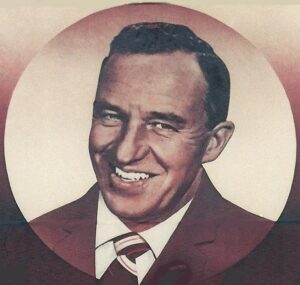
Because they can’t. Because no one can. Not without losing a lot more than $29.95 on each paint job. Car repainting has gotten expensive – even the cheap ones – because paint has gotten very expensive. Never mind the labor involved in painting.
A gallon now costs more than an Earl Scheib paint job used to cost – and not because of inflation. Rather, it costs that much because of the costs that have been imposed (via regulations) on the making of paint. The same factor that has increased the cost of so many things – and made some of them so costly they’ve become unaffordable.
Freon (R12) is a good example.
You used to be able to buy this commonly used automotive refrigerant for about $1.50 a can at any auto parts store. “You” is italicized here to emphasize the fact that you – anyone – could just buy it. You did not have to be a certified AC technician – and have the government’s permission – to buy it. Now you must have the government’s permission – and very few can afford to buy it because Freon currently costs about $100 for the same amount that was in that $1.50 can.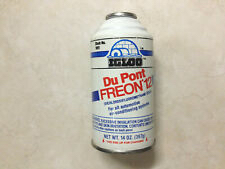
The cost is not “adjusted for inflation.”
It is adjusted for the cost of government, which out-regulated Freon back in the early 1990s. In italics to emphasize the important difference between outlawing a thing – via the passing of laws, by a legislature – and the issuing of regulations, by a bureaucracy. The latter is a kind of communal dictatorship; no particular bureaucrat is in charge. They are all in charge. That makes it much harder to pin down who among them is responsible – or to prevent the bureaucracy from agglutinating more and more power to out-regulate things. Because how would you go about preventing it from doing just that?
When Trump speaks of “the swamp,” that is what he means – and good luck draining it.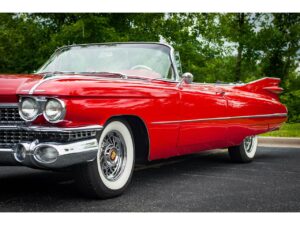
Chrome is another example.
It is used sparingly – if it is used at all anymore – because chrome-plating has been effectively out-regulated, by the bureaucracy. It used to be common – it used to be expected – for even economy cars to have chrome-plated bumpers and exterior/interior trim. It is now common for six figure luxury cars to have plastic “chrome” trim – and plastic bumper covers – because it’s too expensive to chrome-plate much of anything anymore. Stellantis – the combine that owns the Jeep, Dodge, Chrysler and Ram brands – says it will stop using chrome altogether in the near future, citing “risks to those who make it.” In fact, it is on account of what it costs to make it, which has nothing to do with the cost of the chrome itself. Just the same as the cost of a gallon of paint has nothing to do with the cost of a gallon of paint.
Most of the remaining chrome-plating shops are located in California – where, it’s interesting to note, Earl Scheib founded his car-painting business. Most have already gone out of business, on account of the regulations that have made it all-shy-of-impossible for them to remain in business. Soon, they will all be out-of-business. “California is moving toward an outright ban on chrome plating using hexavalent chromium while offering funding for chrome platers to transition to other methods,” says CNN.
Italicized to make a point about the greasy verbiage used by those who try to soft-sell the use of government force to compel such “transitions.” Why not just say: “The regulatory bureaucracy is moving toward an outright ban on chrome plating that will force chrome-plating businesses out of business”?
Because that would make it plain what’s happening – and that will not do.
People might begin to question why they are spending so much more for plastic than for chrome and why they can’t inexpensively service their car’s AC on their own anymore.
Or get their car painted any color – no ups, no extras – for just $29.95.
. . .
If you like what you’ve found here please consider supporting EPautos.
We depend on you to keep the wheels turning!
Our donate button is here.
If you prefer not to use PayPal, our mailing address is:
EPautos
721 Hummingbird Lane SE
Copper Hill, VA 24079
PS: Get an EPautos magnet or sticker or coaster in return for a $20 or more one-time donation or a $10 or more monthly recurring donation. (Please be sure to tell us you want a magnet or sticker or coaster – and also, provide an address, so we know where to mail the thing!)
If you like items like the Baaaaaa! baseball cap pictured below, you can find that and more at the EPautos store!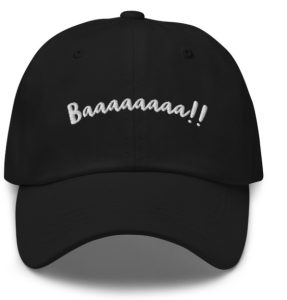





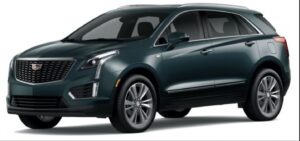





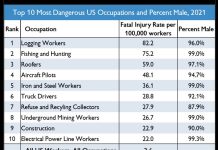

1963…53 Studebaker 2dr Coupe. Earl Scheib, Oakland California, $19.95.
1970…62 Ford Falcon Convertible. Earl Scheib, Oakland California $29.95
Painted the Studebaker black, of course. The Falcon convertible was painted Kelly Green.
FACT: The R-12 refrigerant PATENT just happened to end right at the same time the ban was imposed and DuPont had a ‘new’ PATENTED refrigerant it started using.
Funny about those kind of coincidences, isn’t it? 😉
Eric
Interesting that the powers that be had to outlaw lead paint for housing. Because so many window lickers were chomping the paint off a house……no lead acts as a buffer for EMFs. An as Paul Harvey would utter’’ that’s the rest of the story”.
As a chemist (centrally), I refuse to work with chromium(VI), and while perhaps I wouldn’t have it outlawed, I have no problem with the world moving away from chrome-plating if it spares people from being exposed to that unholy chemical nightmare.
Some chemists refer to Cr(VI) as “hexchrome”, which has a double meaning. It really is like a hex, or more at a Biblical curse, likely causing horrors for generations to come. It’s highly toxic, carcinogenic, mutagenic, and appears to persist in the environment, as well as accumulates in the human body. No thank you.
My respect to those who worked with this horrible stuff to deliver shiny and beautiful car and motorcycle parts through the years. No need to continue with the practice, however.
Exactly… some of the “great old things” were absolutely terrible for the communities of people that liked them. Chrome plating being one, another was tetra ethyl lead used to boost octane in regular gasoline. My grandfather was a chemical engineer in the marketing department for big oil at the time and told me as a little boy they he knew the lead was a really bad idea but it was his job to spin it as a good thing……
True, David. I think we’re all better off for leaving leaded fuel in the annals of history, though some still use it in their airplanes.
Other things best left in the past are the widespread use of mercury, benzene and carbon tetrachloride (especially as a fire extinguisher, haha).
A friend collected “collectable but drivable” Mercedes (whats the plural of Mercedes?) and Packards. He had a cotton warehouse full of them. I mentioned that the black vinyl top on my ’68 Chevy was getting faded after about 4 years and I was afraid it was going to start coming apart. He told me to get Dupont Lucite and paint it. He used it on the folding tops on many of his old-timers and swore it not only protected them but also was flexible enought to take folding/unfolding. We kept that car 18 years and when we sold it the (now white) top was still intact and looked great. My wife would put on a new coat every 4 years or so to freshen it up a bit.
Aside: When we left Huntsville in 1994, he and his son were buying every XKE they could find. $2000 to $4000 cars then. He told me he expected some of them to be approaching $100,000 in 25 years. They were filling another warehouse with them. He knew about more than Dupont Lucite.
darn it re: chrome……………………
my trucks were always black, 30yrs. i strayed last time, needed a change and had to buy a truck off the lot anyway, so I ended up with ram’s fancier white and it had chrome bumpers. It grew on me. so much so that the next truck I bought i did the same thing. with no chrome, all white or black accents just don’t cut it. guess I’ll have to go to another color, darn it.
Ah yes… phosgene gas, the good old days of system repair. Every time I got a whiff of it I thought about the men in the trenches during WW1. Bad stuff, mark
One of those spray guys was wearing a short sleeved shirt.
Long sleeves cost more. Everyone knows that.
I remember that 1986 commercial.
I see the Alpha Romeo Giulia Quadrophenia has a clover on the side. Is that an obscure reference to EricPetersAutos?
Nope.
https://en.wikipedia.org/wiki/Alfa_Romeo_Quadrifoglio#:~:text=Sivocci%2C%20Ferrari%27s%20discoverer%20and%20friend,a%20green%20four-leaf%20clover.
>The four-leaf clover symbol appeared for the first time on one of the four RL Targa Florio autos in 1923.
Maybe EP Autos clover is an obscure reference to Alfa Romeo. 🙂
Alfa Romeo’s Quadrifoglio: A symbol of ‘performance and luck’
Astute viewers who watched the reveal of the new Alfa Romeo Giulia Quadrifoglio at the LA Auto Show may have noticed the brand’s iconic cloverleaf on the side of the car.
The green four-leaf clover, set inside a triangle, has a deep history of triumph and tragedy for Alfa Romeo.
It dates back to the 1920s after Italian race car driver Ugo Sivocci joined the Alfa Romeo team with legendary drivers Enzo Ferrari and Antonio Ascari.
Sivocci was a talented driver, but could never take the top spot in a race and was a perennial second-place finisher.
In 1924, in an effort to banish this bad luck, he painted a four-leaf clover encased in a square box on the side of his car.
1923 Targa Florio
“In his first race, he won,” said Reid Bigland, head of the Alfa Romeo brand in North America, at the reveal of the Giulia.
But just a few weeks after winning the Targa Florio race, Sivocci was testing the new Alfa Romeo P1 on the Manza circuit and did not have time to paint his lucky cloverleaf on the car before he took to the track.
“Tragically, he crashed and lost his life and a legend was born,” Bigland said.
From that point forward, all of Alfa’s race cars, and high performance cars, have featured the “Quadrifoglio Verde,” but with one small change.
All future clovers were encased in a triangle, with the missing point symbolizing the loss of Ugo Sivocci.
This has included the P2, Alfetta 159, Giulia TI Super, Giulia Sprint GTA and the 8C Competizione – all of which have all carried the Quadrifoglio badge.
“(Alfa Romeo) is a brand that has an incredibly rich history filled with legendary racing triumphs and tragedies, colorful personalities and notable superstitions,” Bigland said.
https://blog.stellantisnorthamerica.com/2015/12/16/alfa-romeos-quadrifoglio-a-symbol-of-performance-and-luck/
What a great ad. Shows the product/service and price, the brand, and refutation of the most common customer worries, all in one spot.
Only buy black cars….easiest color to match and no clear coat….
No need to get paint made to match the color on your car…just buy a can of automotive high gloss black spray paint, from the automotive store…$20.00?….
Re: painting old cars cheap….that is why some people just resprayed with rattle can flat black paint….
>some people just resprayed with rattle can
My old IH 4×4 had one of those paint jobs.
Spray can blue over government gray.
IH 304 V8, single 2bbl Holley.
A real workhorse.
Hi Adi,
Even better, how ’bout a gallon of brush-applied exterior latex house paint? I painted a ’69 VW wagon a beautiful shade of green…
My reply to this wound up at the top of the stack (likely pilot error). If anyone is interested, it has a different slant on latex house paint.
A long time ago Porsche took a newly developed race car to a race in Italy…they were afraid of it being vandalized…to stop it winning….so they painted it with white house paint with a brush and painted Italian flags on it front and back…it won the race…it is in the Porsche museum today….
But black is a BITCH to keep clean! I know, because I had a black Nissan back in the day. When it’s clean, nothing looks better. However, it only takes a couple of days for black to look filthy, and make the car look like it hasn’t been cleaned in days, if not weeks.
Oh God
I used to work for a place that made some of the paint for OEM and tier manufacturers.
Worst company & worst job of my life. 6 years down the toilet, 4 of which I spent looking for a new job, only to get fired for standing up for myself after some especially egregious corporate mistreatment.
I’m of the opinion no one should buy paint, for anything, ever. Basically the entire industry has pissed me off royally at one point or another.
There is nothing more satisfying than telling a company who’s desperate to keep looking, because they wouldn’t even look at your resume when you actually needed a job. Twice.
What Affects the Cost to Paint Your Car?
Just as no two used cars are exactly alike, neither are two paint jobs. There are some key variables:
The size and type of vehicle. A large SUV will require about 1.5 gallons of paint, but a midsize sedan needs only about a gallon. One shop estimated that a gallon of high-quality paint could range from $700 to $1,000.
How much body repair is required? Slapping a new coat of paint over rust, dings, and dents won’t fix those flaws and might make them stand out more. Repairing and preparing a vehicle for painting can easily account for more than half the total repainting cost.
The type, quality, and even color of paint. For example, metallic paint will cost more than regular enamel, and some colors, such as bright red, cost more than white.
The number of layers of paint and clear-coat finishes. Some vehicles have multiple layers of paint and a clear-coat finish, which protects the paint from environmental damage. The more coats that are applied, the more expensive it gets.
How Good Does the Paint Job Have to Be?
Some shops offer “good, better, best” paint jobs, while others may offer only one level, which might not qualify as “best.” Here is how one shop owner outlined his options:
At the low end: No trim is removed, just masked, and the existing finish gets sanded before repainting. The estimated cost is $1,200 to $2,200, and the warranty is for six months to a year (set by the paint manufacturer).
Midlevel: Some trim and the bumpers are removed, there’s more surface preparation, and higher-quality paint is used. The cost is $3,500 to $5,000, and the warranty is three to five years.
High end: All exterior trim is removed, the body gets extensive repair and preparation, and the paint is top quality. $7,000 to $15,000, with a lifetime warranty.
In all three cases, the job only covers outside body panels and does not include painting door jambs or the underside of the hood or trunk. Those add cost, as will painting a car a different color.
Some shops and chains advertise that they can repaint vehicles for less than these estimates, but those might not provide the same level of preparation, paint of the same quality, or a clear coat.
https://www.carfax.com/blog/car-paint-job-cost
A boat is worse…
One boat owner, with a 30 foot boat….was quoted $25,000 to repaint the upper part of the boat…not the hull or bottom…
I had a few of those $99.99 specials done, myself. Do your own prep on the car, or don’t, they don’t mind painting over rust, emblems, door handles, etc., lol!
Ah “Earl the Pearl” Scheib. Got my first beater Cadillac repainted for “$99.95” back in the late 1980s and learned how Earl kept his prices so cheap. You got a standard set of paint (Red, Dark Red, Blue, Dark Blue, etc.) for $99.95, and more colors for more money. After using Bondo and metal patches to make my old rig presentable, and wet and dry sanding the entire car for better adhesion and a smoother finish, I brought her to my local Earl Scheib store. I picked a color that appeared “close” to the stock Firemist Red applied by the factory.
Later that day I picked up a Cadillac as red as a fire engine. 🤣 Nearly 20 feet long and bright red. NOBODY would miss that car in a parking lot, even if you wanted to. I put white pinstripe tape (remember factory applied pinstripes?) over the ghosted factory pinstripes and had a halfway decent looking car. And for all the jokes about Earl Scheib the paint job did last while I owned the car for the next two years. A good wash and wax and it was still shiny for a car that spent the bulk of its time outside in the elements.
I took my next car, again a Cadillac, to Maaco and got it repainted the stock factory metallic blue color. The car was in better shape overall compared to my first Cadillac so it came out looking really nice.
The final car I got repainted was a Chrysler Conquest painted “Arrest Me Red” from the factory. The previous owner let the clearcoat fade and a new respray from an independent Body Shop brought it out fiery red.
Even in the late 1980s I learned the score on automotive paint. I helped my friend do some bodywork on his sister’s Nissan 200. Even at that point it was a bare minimum of primer and basecoat with TONS of clearcoat added to bring a shiny finish.
I know the “environmentalists” got after the auto manufacturers to reduce the number of solvents in their paints. I know GM went to water based paints and primers and in the late 1980s / early 1990s the paint and clearcoats peeled off in big patches. Apparently people are still complaining that GM paint is still falling off. I was very disappointed to see the paint on my 2013 Ford Mustang fall off of the edge of the hood in big chunks. Per the internet the problem was the hood was aluminum to save weight and the primer wouldn’t stick or would chemically react with the aluminum underneath. Some people reported big paint bubbles popping up on the hoods of their Mustangs (2005-2014).
Then again, on YouTube there is a video of the old AMC plant in Kenosha, WI in the 1970s. They follow the cars down the line and in the paint booth the painters have their paint guns and no respirators (some don’t even have safety goggles). In the comments someone noted there were big exhaust fans to draw the paint and fumes away but I bet when those guys blew their nose after a day at work the results must have been in Technicolor.
Water base paint doesn’t work as well, even though it’s environmentally “friendly”.
Toyota makes it work OK.
But almost all of the plastic parts, except for a few interior ones, are painted with solventborne products.
Here is one example of automotive paint pricing:
https://www.paintscratch.com/products/pricing.html
Primer: $150/gal
Basecoat: $600/gal
Clearcoat: $150/gal
I have no idea if these prices are typical, or not.
I do know, courtesy of an expert, that today’s automotive paint, and paint jobs, are much better quality than was available years ago (the days of Earl Scheib).
For starters, today’s paint is flexible, which allows paintless dent repair of some dents, something which was not possible years ago. Some dents can be pushed out from the backside, without damaging the paint, which is cheaper than repainting the body panel.
This was not possible years ago, because of the formulation of the paint.
As well, more paint jobs today are clear coat over base coat, which looks really nice, and should be more durable than the old base coat only. My expert tells me it was the Japanese manufacturers who started raising the stakes on paint jobs, with American and other manufacturers having to follow suit. Naturally, these paint jobs are more expensive, because there is more work involved.
I do know that the latest repaint (clearcoat over deep shadow blue metallic, now about 5 years old) of my ’89 F150 is holding up extremely well. It looks brand new, better than the single coat of baked enamel which came from the factory, and I still get grins and thumbs up from other drivers.
Depends on the color.
Red tends to be super duper expensive.
If anything I’d say those numbers look closer to raw material cost than selling price.
I always keep an inflation calculator bookmarked -mainly because of the history channel when they do the “that’s the modern equivalent of $300”. They never explain why what was $29.95 in 1965 is now $300. Nor do they explain the rise of the regulatory apparatchik.
OT: I didn’t not watch the “debate” yesterday. However having seen plenty of news / analysis this morning I’m convinced Vivek Ramaswamy was right i.e. it was a setup to purge Ol’ Joe and get someone who can compete against Trump (California’s governor hairdo or big mike obama)
Ramaswamy’s prediction at one of the republican debates:
https://youtube.com/shorts/8LEiSVXSyak?feature=shared
Our family was located outside Cleveland Ohio in Amish country, and one of my smart brothers attended Case Western Univ., we all drove Ford Pintos, and one day he decided on the way in to his classes to get his Pinto painted dark forest green at Earl Scheib for 29.95 – a ridiculous low cost for a paint job.
After his classes he returns to the Earl Scheib paint shop to retrieve the car and drive home, but they painted it lime green – not forest green – it was super ugly. Later he rolled that car into the ditch, and it was beat to shit and lime green – with cardboard over a broken window. It was the wreck from hell.
And that was the car he drove for years until he got his Chem. Eng. degree and got his first job at BP (which was Sohio at that time in the early 1980’s) and soon became wealthy, and now lives in a mansion and drives upscale cars. But that story of his lime green Pinto is still told at dinner parties.
One joke back then was that if you planned to have Earl Scheib repaint your car, you had better wash it first, because washing the car was not included in the price of the paint job. Don’t know if that was true or not. 🙂
I think they might of washed it with a hose or had a bucket crew. My brother says I told the story wrong – he wrecked the car first then got the paint job. He actually rolled it upside down in a ditch, he was close to home, so he got grandpa and the tractor and pulled it back right side up, it was horribly dented, etc.
The car, righted, started right up. So at midnight, they drove it to a wrecking yard and dropped it off with the keys and title. When they got home they checked the Cleveland Plain Dealer newspaper classifieds for an econo car – and everything was to expensive – so they went back at 3 am and retrieved the wreck – and after that the decision to get the cheap paint job to make the car more presentable – but is made the car more ugly. I think at the time the paint job was $99.99 (late 1970’s).
I was warned if you didn’t mask any of the chrome trim they’d paint over that too. They appear to have masked off, albeit very quickly, the chrome trim on my old Cadillac when I brought it there.
The modern day equivalent of Earl Scheib is the MAACO franchise which can and does offer a paint job for as little as $300. I’m not sure someone would want that, though, as it’s probably a primer/paint combo used to simply cover the surface, not look great. Good single-stage paint from them is up around a thousand while a base/clear coat job is considerably more when factoring in wet-sanding and buffing. Your best bet to keep it cheap is to do the prep work yourself and have MAACO top coat it.
To put a finer point on your article, it’s not just “government cost” that makes paint, refrigerant, etc. costs to increase significantly. It’s the increased cost resulting from rent-seeking cronies that can enforce this additional “rent” through the government badge and gun. In the case of paint and refrigerant, it’s the goddamn chemical companies that have lobbied (i.e. bribed) the government to mulct us on their behalf.
One could make the point that the regulators are just eliminating the tragedy of the commons when it comes to industrial waste. That pouring used chemicals down the drain and venting gas into the atmosphere is no different than overgrazing the common meadow.
But then where does one draw the line? In a world where there is no commons, it’s pretty easy to figure out, the property line. But when the air and sea is owned by the state (because without title or deed the state assumes possession), then anyone who has the ear of the king controls the commons. And for now the loudest voices in the king’s court are the most emotional and (ironically) conservative. Oh, not Republicans. I’m talking about the greens. Any change in nature is the fault of humans, even if there’s no proof. Because of course it is. So no change is permitted ever.
Interesting story, tangentially related.
(Warning, conservative nazi editorial site)
https://www.takimag.com/article/climate-change-movement-goes-to-court-will-judges-ban-fossil-fuels/
The argument that Freon is bad for the environment is specious at best. They claim it caused a hole on the ozone layer, but that nonsense was created when the patent on Freon was ending. It’s bullshit. This is how the crony rent-seekers work. They hire a PR firm, pay “journalists” and hire “scientists” to manufacture a narrative so they can use it to force us to buy their new patented product.
They then use this manufactured narrative as a pretext, screaming that requiring the use of our new patented refrigerant is essential to eliminate the tragedy of the commons (i.e. eliminate a negative externality). This is how the game works, now pay up if you want some a/c.
Yeah.
Every time the patent on a refrigerant comes up it’s like magic: the old one is banned, but the brand-new, freshly patented version is made available.
Every fricking time!
Freon was originally developed during the 1930s, so any and all patents on it expired in the 1950s.
I got half a dozen of those small 134a cans for free from a neighbor and have the tool to put in my car’s AC system, cheap insurance when that stuff gets crazy insurance.
I miss the days of affordable paint work because back then you could make your old daily driver look good again for a reasonable price not now. Last quote I got from a legit shop they wanted more than what the car was worth to do my rockers. I got it done by a biker I know for around $800.00, looks like he’ll be doing more of my body work/ paint.
Until a few years ago, we had an Econo Bake franchise at the freeway exit near our house in North Austin which would apply a $300 paint job to a car. They always seemed busy.
That store was eminent domain-ed out of business as the freeway exit got rebuilt and road widened. I believe that they relocated within a few blocks, but that didn’t last long.
‘Because that would make it plain what’s happening – and that will not do.’ — eric
What’s happening in the Lügenpresse is brazen, in-your-face disinfo, from a stenographer wretch named Apoorva:
‘C.D.C. researchers said they had, for the first time, detected that Pfizer’s Covid vaccine may have led to four additional cases of Guillain-Barré syndrome per one million doses.
‘The risk may not turn out to be real, but even if it is, the incidence of G.B.S. is comparable to the rate observed with other vaccines, the researchers said.
‘The C.D.C. has also investigated a potential risk of stroke after vaccination, but the findings thus far are inconclusive, agency scientists said. In any case, the benefit from the vaccines outweighs the potential harms, they said.’ — New York Slimes
https://archive.ph/ji08L#selection-5231.0-5231.231
Don’t believe your lyin’ eyes, advise the fedgov confabulators. It’s not real. And it’s inconclusive.
Honest Injun Apoorva just credulously copies down this self-serving Big Pharma drivel on her steno pad. An actual journalist would know that dozens of researchers have documented Guillain-Barré, stroke, harms exceeding benefits, and many other baleful consequences of covid vaccines. Then she quotes this blithering idiot:
‘Even if children do not become ill themselves, they can fuel circulation of the virus, especially once they return to school, Dr. Stephen P. Furr said.
“They’re the ones that, if they’re exposed, are more likely to bring it home to their parents and to their grandparents,” he said. “By immunizing all groups, you’re more likely to prevent the spread.”
Uhhh … WTF year is it, man? Did not Weeping Walensky herself, in 2021, admit that the ‘vaccine’ CANNOT stop the spread? Yet this debunked old chestnut is still reported as truth?
GAHHHHH!!!! *smashes fist through the sheetrock*
Death to the Lügenpresse!
How about $2,000 for a gallon of top-shelf Red paint? And the Caddy you pictured would take several gallons to cover properly. That doesn’t include hardeners and ancillary materials to do the job right. Not to mention labor costs. $20/hr minimum wage, anyone? Anything over 89 minutes to paint the car would blow out the $29.95.
Out-Regulated is our dystopian future.
At a car show, a guy showed me his Corvette in metallic orange. ‘It’s a wrap,’ he said. I was so taken aback I had to ask him to repeat his remark.
He said it was a mid-level wrap job, around $4K. It included the door jambs. Looked just like metallic paint. You could pay $12,000 for a high-end wrap job, he said.
Wonder if the rise of wraps is a side effect of paint getting regulated into impracticality?
No doubt, Jim H.
A wrap can be applied anywhere using a set of tools which fit into a small box while paint requires specialized equipment, industrial space, and local infrastructure transporting and selling the raw material.
I watched a wrap get applied to a Tesla Model X at an anime show over the course of an afternoon last year. Right out on the show floor.
No word on where the wrap originated. I imagine that those can be easily sourced from overseas.
As a Christmas gift My Lovely 🥰 Mrs. got us a wine tasting at the Foyt Wine Vault in Speedway, IN, just down Main Street from the Indianapolis Motor Speedway.
(As an aside, yes, there is a Foyt winery in California and yes, the wine is very good. Much better than wines from the Andretti winery. 😉)
The tasting was in the AJ Foyt Racing Team Garage right next door to the winery. We got a tour of the offices and shop and sipped wine among the race cars being prepped. Where I learned that all of the Indy cars are vinyl wrapped and not painted. The reasons being:
1) Vinyl wrap weighs less than paint, a vitally important point for racing cars.
2) It’s faster to apply than paint, so if a team picks up a new sponsor or changes sponsors, you just put on a new vinyl wrap rather than strip and reapply paint.
3) Vinyl wrap is smoother than paint, also important when you need to get every extra percent of an MPH for a racing car.
Interesting stuff indeed.